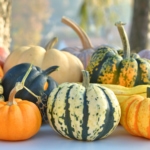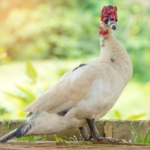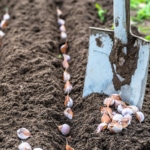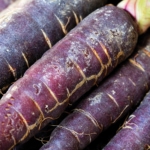Stevia: Growing Sweets in the Garden
Grow your own calorie-free sweetener! Learn how to add Stevia to your garden plans.
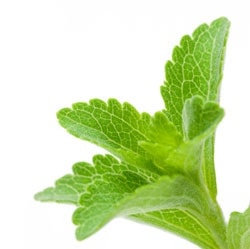
You’ve heard about the natural sweetner, stevia, but what is it? Where does it come from?
Stevia rebaudiana is called ka’a he’e in the language of the Guarani people of Paraguay and Brazil. The gently-serrated leaves have been used for centuries by the Guarani as a sweetener for their native tea (yerba mate) and for various medicinal uses. The leaves of this herb can be up to 300 times as sweet as sugar. The standard used in most recipes is one tablespoon of dried stevia leaf equals one cup of refined white sugar. The fresh leaves can be used as well, but are less potent than dried. Homegrown potency will likely vary from plant to plant.
Stevia has the wonderful property of being calorie-free, and has no effect on blood glucose levels, making it ideal for diabetics. And it’s great for sweet-toothed individuals trying to avoid weight gain. To be fair, some folks complain of a licorice-like aftertaste that lingers on the palate, though I personally haven’t noticed this in my experience with stevia (sold as sweetleaf in health food stores).
One thing to consider, if you’re going to grow your own, is whether to go with started plants or seeds. I’m going to order both. Seeds and plants are readily available from many seed suppliers. Look for companies that will mail plants after danger of frost for your area. Prices on seeds vary greatly, so I’m going with suppliers that have treated me well in the past. Some sources say the seeds should be very dark in color, and that germination will not occur if the seeds are light. The plants are sub-tropical, and will likely require a heating pad, or some other kind of bottom heat, to germinate. The seedlings grow slowly; so surface plant your seeds in a good organic potting soil 7-8 weeks before transplanting outside. Use a bottle mister to keep moist.
Stevia grows in somewhat shaded conditions; and is often found near streams or marshes in its sub-tropical home. In temperate zones, it may need to be shaded if temperatures soar into the high 90s. This can be accomplished with old screens or lattices raised above the plants, which grow two-three feet tall. Since they flourish at the edges of damp areas, we can surmise that they don’t like long, dry spells. Applying an organic mulch to keep their roots moist, but not flooded, is in order. Planting in raised beds is probably best, but planting in hills should work as well, too.
Stevia grows naturally in soils with a pH of about 4.5, but doesn’t seem to be too fussy, and can be grown under less acidic conditions. Stevia is a tender perennial. So put out your plants when soil is in the 60° F range. Give the plants some room, at least 24″ in all directions. A mild, foliar, organic seaweed misting every couple of weeks is probably all the fertilizing necessary, so hold back on the nitrogen.
If you want to take cuttings of your plants for winter container growing, take stem cuttings (which will root without hormones) in the summer, before flowering occurs. Plant pests are not likely to be a problem for stevia; and it may show promise as a companion plant.
Stevia should be harvested before the first heather-like blossoms appear, around late September in the Northeast. You might consider letting a couple of plants flower in order to generate seed for the next season, if all is successful. Harvest your plants in the morning, after any dew has evaporated. That’s when the active ingredient, stevioside, is at its highest level. Bundle the branches and hang in a warm, dark, drafty area for a couple of days. Next, remove the dried leaves by hand and crumble into a dry container. In its dried condition stevia will keep almost indefinitely.
A liquid sweetener can be made by pouring one quart of boiling water over a tablespoon of dried leaves, which is left to infuse. This can be refrigerated and used over a few days or frozen for later use. It’s great for sweetening coffee, tea, or even oatmeal.
Good luck with stevia and happy gardening!
Paul Robert
Paul Robert lives in Hartford, Maine, with his dog Raymond. He has been an organic gardener for over 35 years, and raises some poultry as well. His special interest is trees. Several kinds of oak and elm, as well as Korean mountain ash, American and Chinese chestnut, persimmons and many other specimens grow on his 1.6 acre mini-farm. He may be contacted at [email protected].


